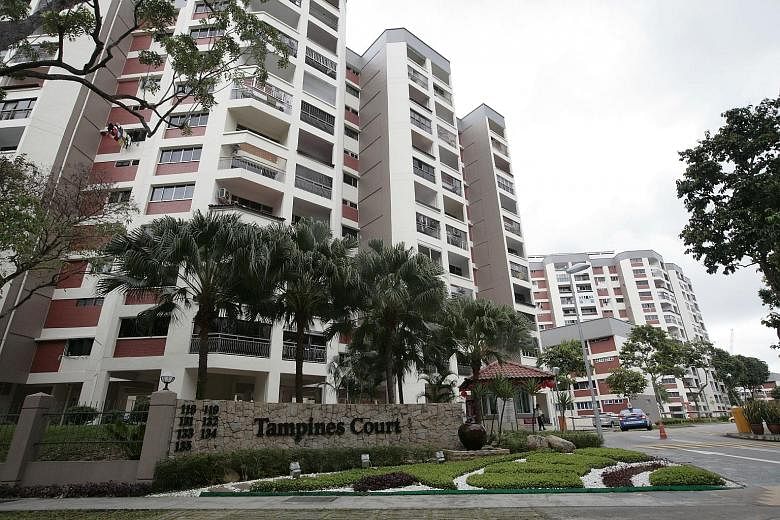Home owners at Tampines Court may have thought their collective sale was sewn up when a buyer was found, but the deal has become mired in technical hitches.
The process is believed to have been delayed as developer Sim Lian Group awaits Planning Permission approval from the Urban Redevelopment Authority (URA).
The firm is also engaged with the Land Transport Authority (LTA) over its proposal to upgrade two existing road junctions and build a new link to the slip road leading to the Pan-Island Expressway.
These road improvements are needed so the developer can increase the number of units from 560 now to about 2,000.
But Sim Lian will have to sacrifice about 6 to 7 per cent of the 702,164 sq ft of land to build the slip road.
The firm was awarded the site last August and submitted its planning proposal last December.
It can take 20 days to assess a development application but it can also be longer depending on the complexity of the development proposal and the site constraints.
Tampines Court owners worried at the lack of updates about the collective sale process have been demanding to know if the sale is still on and whether they can collect their sales proceeds in April.
Mr Desmond Sim, CBRE Research head of Singapore and South-east Asia, said the technical issues have arisen because the market is now focused on intensifying the number of dwelling units rather than the plot ratio.
"Usually when you increase the plot ratio, you have to pay a development charge, which is a betterment levy paid to the state for it to improve the infrastructure to cope with the increased density," he said.
"But now, the market is not driven by an increase in plot ratio, but predominantly by an increase in number of units; some developers do not even increase their gross floor area. That's why the Government needs the traffic study, because more units mean more cars per development, and that's going to put a lot of pressure on road infrastructure."
Many former HUDC developments, where apartments average 1,700 sq ft to 1,800 sq ft in size, have been sold en bloc recently.
Some developers are looking to triple, or even quadruple, the number of units by downsizing apartments to about 750 sq ft on average.
Last November, a new rule stipulated that potential buyers, developers and real estate agencies must submit a Pre-Application Feasibility Study to the LTA assessing the traffic impact of any redevelopment on the neighbourhood and proposing measures to manage traffic demand. Developers need to do this before they submit development applications to the URA.
Occasionally, there are also one-off, site-specific hurdles that developers encounter in the land they acquire. For example, in Clementi, SingHaiyi Group, the new owner of the Park West plot, will have to work with the authorities on an above-ground substation on-site that supplies electricity to not just the condominium but also the neighbouring landed estate.
SingHaiyi said: "The purchase of Park West was transacted recently in January 2018. We are still in the midst of drawing up the redevelopment plans. However, we do not foresee the substation to be an issue at all."
Market watchers said SingHaiyi would likely have to build a new substation before demolishing the existing one.
Mr Norman Ho, a real estate lawyer and partner at Rajah & Tann, said not everything can be buffered against in contractual clauses. "For the building of roads, this is the directive of the authorities to serve the new development, and it may be difficult for the purchasers to agree to have the qualification."
So it is "not usual" for lawyers to include clauses that allow developers to abort the deal should ancillary infrastructure work prove too extensive.
"But this is commercial and it is up to the developers to provide that in the event they are required to incur expenditure of more than a certain sum, they will have the option to abort the purchase," Mr Ho said.
But "in the event that there are a few favourable bids, the sellers may not accept such conditions".
To be sure, not every collective sale developer faces these technical problems. For some, the approval process has been smooth sailing.
Just days after the URA announced the new Pre-Application Feasibility Study rule, Oxley Holdings said its redevelopment proposals of 1,472 units for Rio Casa and 1,052 units for Serangoon Ville, both acquired through collective purchases, had received in-principle approvals from the LTA.
Oxley chief executive Ching Chiat Kwong said: "So far, we haven't had issues with the authorities. There are probably many submissions to these departments, so their replies and approvals may take a little longer. Hence, we need to exhibit more understanding and be patient as well on our part as a developer."

